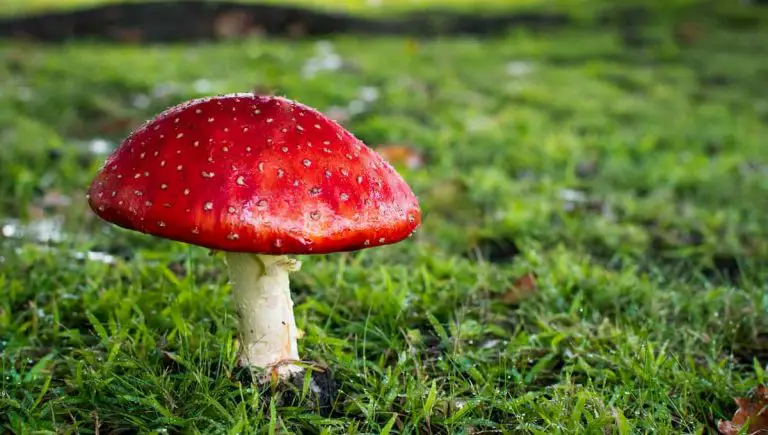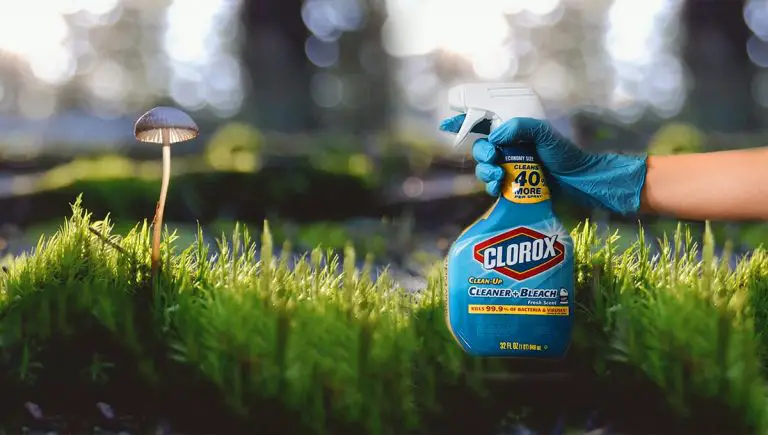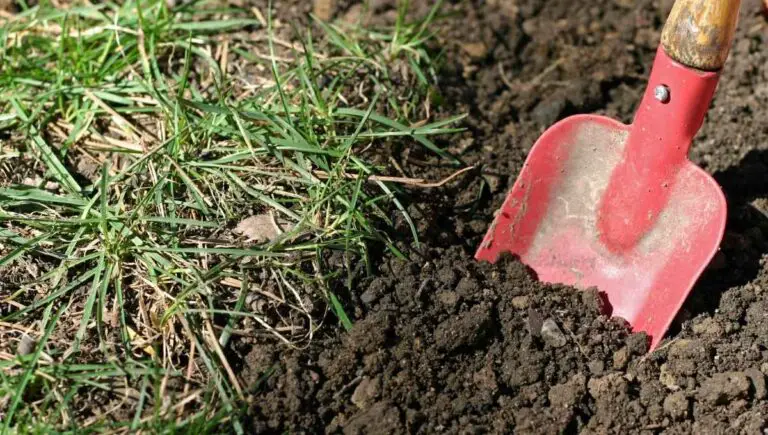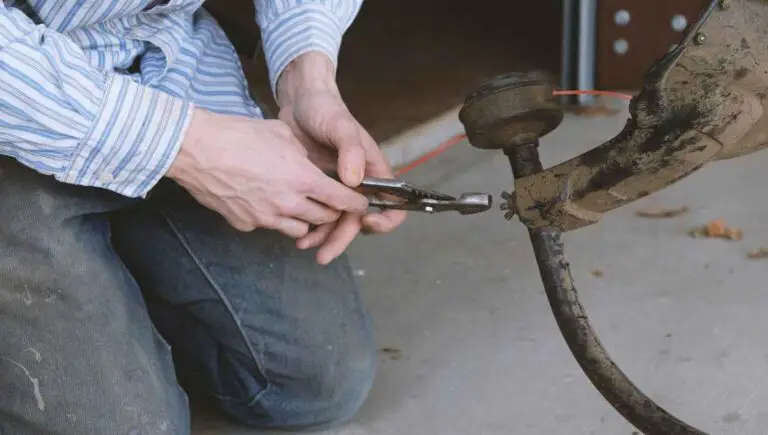Do Weed Eaters Take Regular Gas? (Choosing the Right Fuel)
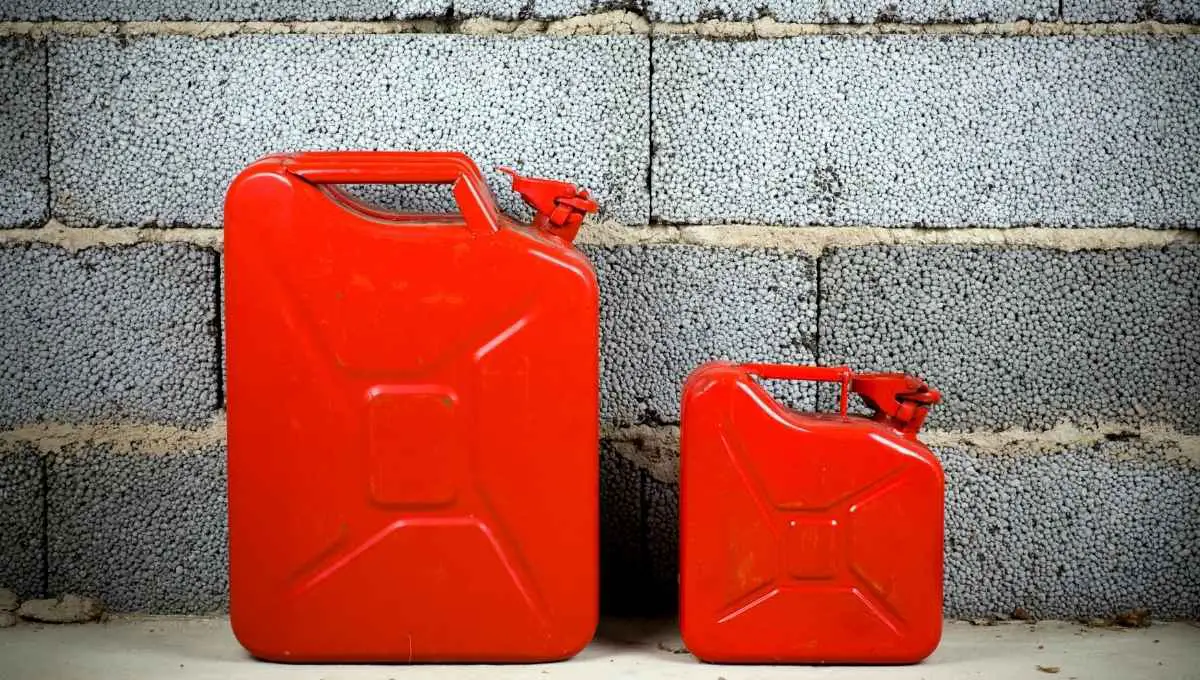
Weed eaters are an excellent tool for landscaping your yard, but most people don’t know how to maintain them and get confused. For example, we all know that picking the correct gas type is essential for the engine’s function. But do weed eaters take regular gas?
Weed eaters need to use unleaded regular gas with a high-octane content, often varying from 87 to 89 octanes or higher, depending on the brand and model. Furthermore, weed eaters can’t take gas that has more than 10% ethanol. Therefore, it’s recommended to use an ethanol-free gas to avoid damaging the trimmer’s engine.
While weed eaters are often an affordable way to treat your lawn and other spaces of your landscape, we know how confusing choosing the right type of gas can be. So, in this article, we will discuss the type of gas weed eaters need, why ethanol gas matters, and why it’s important to choose the right fuel.
This post contains affiliate links from Amazon and other stores. This means Yard Blogger may earn a commission if you make a purchase using any of our links. Please refer to our full affiliate disclosure policy for full details.
Here’s a Quick Pro Tip!
Your weed eater will need unleaded regular gas with 87 octanes or higher and with a maximum of 10% of ethanol. However, you can also opt for an ethanol-free gas if you believe this is the right choice.
These products will help you upgrade your experience with weed eaters:
1. VP 4-cycle Small Engine Fuel – This unleaded gasoline best powers your 4-cycle trimmer.
2. TruFuel Pre-Blended Gas – This product has a mix of oil and gas with a 50:1, so you don’t struggle to take the correct measurements for your machine.
3. 2-cycle Mix Motor Oil – Perfect for all your 2-cycle small-engine outdoor equipment!
Gas Weed Eaters Use
If we don’t choose the right gas for our common outdoor equipment, we risk damaging them and having to buy a new one. So, let’s discuss the type of gas your weed eater needs in this section.
What Kind of Gas Does a Weed Eater Use?
A weed eater or trimmer uses around 87-89 regular unleaded gasoline gas, often with a minimum of 10% ethanol (otherwise referred to as alcohol). A weed eater gas must be this way because gas with high ethanol content harms the engine.
A weed eater also needs oil. Some gases come with the oil already mixed in so that you don’t struggle to find one suitable for your engine. However, most weed eaters need you to mix oil and gas proportionate to a specific ratio found in the owner’s manual.
Can You Use Ethanol-Free Gas in a Weed Eater?
You can use ethanol-free gas in a weed eater. In fact, ethanol-free gas is often recommended, as using this type of gas reduces the risk of damaging your trimmer. However, ethanol isn’t good for weed eaters because it can harm its carbureter, which influences your trimmer’s function.
The higher ethanol content in a gas used for a weed eater will cause it to harden and “gum up” quicker than expected. If this happens, it can affect how your trimmer functions. Unfortunately, the only way to fix it is to change the fuel and replace the related pieces.
What Octane Gas to Use in a Weed Eater?
It is recommended to use a type of gas that contains 87 octanes or higher for better trimming performance. Anything lower than that could affect its overall functionality by reducing its working capacity.
However, people can prefer to use lower or higher than that octane estimate. Some find it appropriate to use lower because it increases the engine’s performance, while others prefer to use higher (90 octanes or more) to protect the fuel lines from heat.
You might also enjoy our post on If a Weed Eater Can Get Wet
What Kind of Fuel Does a Weed Eater Take?
The kind of fuel that a weed eater takes is an 87 (or more) octane unleaded regular gas, preferably with little (10% or less) to no ethanol content. The reason why a weed eater needs to have this type of gas is to protect the engine’s functioning.
The wrong kind of gas can lead your weed eater to stop working due to overheating, so it is important that you get the right gas for your trimmer to avoid incidents like this.
What Gas Does a Weed Eater Take?
A weed eater or trimmer uses a regular unleaded gas to protect its function. This gas type should have less than 10% ethanol content as required by law.
However, you can also use ethanol-free gas that also meets these criteria. In fact, this option can be beneficial if you are concerned about your weed eater’s lifespan. So, you may consider getting one if that’s the case.
What Is the Best Gas for Weed Eaters?
The best gas for weed eaters will be unleaded regular gas with little to no ethanol, and most weed eater brands often sell this gas. They will also vary depending on whether they’re a 2-cycle or a 4-cycle engine.
Let’s take a look at common trimmer models and the gas that they should be using:
| Husqvarna 130C | Husqvarna XP Pre-mixed Two-Stroke Fuel |
| Craftsman 41BDSS30793 | TruFuel ethanol-free gas |
| ECHO 17 | Echo 17 Gas Blend |
| BLACK+DECKER 4-cycle Gas String Trimmer | VP 4-cycle Small Engine Fuel |
Type of Gas
Your weed eater does not take the same fuel as your car, so it is important to know the right type of gas you need to power it. Let’s talk about the type of gas your weed eater needs and why it matters.
Does It Matter What Octane Gas You Use in a Weed Eater?
Using the right type of octane gas in a weed eater does matter because it ensures that it does not damage the trimmer’s engine, prolonging its lifespan and lowering the risk of any damages its malfunctioning could cause.
According to an article in Consumer Reports, ethanol can cause erosion of metallic and rubber parts, often found within mowers and weed eaters.
Thus, the Environmental Protection Agency regulates the amount of ethanol your weed eater’s gas must have. For cars, though, an E15 type of gas is permitted (which means 15% of ethanol content in gas).
You might also enjoy our post on What to Do if Your Weed Wacker String Keeps Breaking
Does It Matter What Kind of Fuel You Put in a Weed Eater?
The type of fuel you put in a weed eater matters because not all fuels are meant to work for these devices, and not using the right one can damage its engine. Thus, you should understand the type of gas your weed eater needs.
If you use the wrong type of gas for your weed eater, the motor of your device will seize and stop working. Therefore, you should endeavor to pick the right gas according to the owner’s manual.
What Happens if You Put Weed Eater Gas in a Car?
If you put weed eater gas in a car, it should run without much problem, although you still risk creating blockages in the fuel injector. Nevertheless, many still prefer to use it despite the risk.
So, your car may function normally, but then it will suffer from certain damages, and maybe it won’t receive gas very well. Thus, you should stick to normal car gasoline to avoid such possibilities.
How Much Gas Does a Weed Eater Use per Hour?
Weed eaters often need around one or two liters to operate, depending on the type of “hp” they produce. HP stands for “horsepower” and measures how fast an engine works for a specific purpose.
The horsepower will vary depending on the type of trimmer. Most common household trimmers use 1hp, so their functionality is greatly reduced compared to professional weed eaters. This power is formed by fuel consumption.
Are There Weed Eater Gas Mixes Available?
There are weed eater gases that are already mixed with the oil your weed eater engine needs, which is why you won’t need to stress further about finding the right type of fuel for your trimming device.
However, it is still important that you learn how to mix weed eater oil and gas according to the ratio specified in the owner’s manual since mixed gasses can be hard to find in many cases.
What Kind of Oil Do Weed Eaters Use?
Weed eaters use either motor oil designed for air-cooled engines or a type of oil referred to as 10W-30 engine oil. These oils are supposed to tolerate heating temperatures, which helps protect your engine’s performance.
10W-30 is usually meant for engines exposed to extreme temperatures. You can use this oil mixed with the weed eater gas to help ensure that the engine does not collapse while working.
You might also enjoy our post on Do Weed Eaters Need Oil?
Cycle Size and Tank Size
Generally, there are two types of gas string weed eaters: 2-cycle and 4-cycle. They don’t need the same amount of care because they work differently. So, let’s talk about these types of weed eaters below!
Are Weed Eaters Two or Four-Cycle?
Weed eaters can come in either two or four-cycle devices, and each has a different maintenance requirement because of how gas and oil are applied to them. Two-cycle trimmers are often easier to maintain than four-cycle weed eaters.
Here are common differences between a two-cycle weed eater and a four-cycle weed eater:
- 4-cycle weed eater – They have separate compartments, one for gas and one for oil, so you don’t need to mix gas and oil to fuel them. Yet, it is harder to maintain and keep working. They are also heavier in weight.
- 2-cycle weed eater – They’re not so heavy and are usually affordable. However, you need to mix gas and oil at the exact ratio the device’s brand requires (often between 40:1 and 50:1). It’s easier to maintain, but it’s not environment-friendly.
You can choose any of them, depending on your budget and the type of work you need. Each trimmer comes with different features, so you should check them out.
Do Four-Cycle Weed Eaters Need Oil?
Four-cycle weed eaters need oil, but it is not always necessary to mix it with gas because it has special compartments for each. This feature helps these substances distribute evenly without harming the machine.
Since they distribute evenly, this device does not need high maintenance and, therefore, may have a longer lifespan than a 2-cycle trimming device. Hence the reason why most people prefer this type of weed eater.
How Do You Mix Gas for a Weed Eater?
Using a mathematical equation, you mix gas and oil for a weed eater by following the required ratios. For example, you have to convert one gallon of gas to ounces and then divide it by the number of parts of gas you need for one part of the oil.
The ratio will depend on the brand of the device that you use, but it commonly ranges between a 40:1 ratio to a 50:1 ratio. If done incorrectly, your machine’s performance won’t be as good as expected.
To calculate the correct oil quantity using math, you must convert one gallon of gasoline to ounces. One gallon of gasoline is 128 ounces, so if you have a 50:1 ratio, you have to divide 50 by 128, and the result of this division will be the number of ounces of oil you need to mix.
After calculating this, use a gas container and pour the oil first. Then, follow it with the unleaded gasoline your weed eater needs. Then, you have to shake it well until it mixes.
How to Mix Two-Stroke Fuel for a Weed Eater?
Mixing two-stroke fuel for a weed eater requires you to check the owner’s manual to determine the type of ratio it needs. Based on this ratio, you then calculate how much oil you have to mix in the fuel.
The ratio will tell you how much oil you need to mix with the gas. For example, if you have 40:1, you need 40 parts of gas for one part of the oil. To determine the ounces of oil you need, divide 40 by one gallon of gasoline (or 128 ounces).
This will result in the number of ounces of oil needed for your gas. Next, pour the oil and the gas into an empty and clean gas container, shake and mix well. Then, it’s ready to be poured into the trimmer’s tank.
What Is the Standard Weed Eater Tank Size?
The standard size of a weed eater tank is 18 ounces. Thus, it’s easy to drain the gas from it to prevent it from damaging the machine. Then, when you refill the machine, you’ll only need to fill it halfway or more, depending on your use.
It’s preferred that you fill it when you need to use it, then drain the gas afterward. However, leaving the gas on your machine for a long period is not recommended, as this could create unrepairable damage.
Do Weed Eaters Take Mixed Gas?
Weed eaters take mixed gas to protect the trimmer’s engine. This mix consists of gas and oil. The correct mix is determined by a ratio specified on the product’s label, which you can consult in your owner’s manual.
If you don’t follow the mixing procedure correctly, you risk overheating your engine or seizing it. Unfortunately, this means it will stop working, and you’d probably need to get a new one or replace the harmed piece, which is hard to do.
You might also enjoy our post on What Kills Weeds Permanently?
Related Questions
What Does CC Mean to Weed Eaters?
On weed eaters, “CC” stands for cubic centimeter, a measure of volume used for cars back in the day (before switching to liters). So it is a measure of the engine size that your trimmer has.
When shopping for a new weed eater, you’ll notice that there will be a number next to this “cc.” That will indicate the number of cubic centimeters your new weed eater’s engine has, and it’s essential to know this to understand its expected performance level.
Do Weed Eaters and Chainsaws Use the Same Gas?
Weed eaters and chainsaws use the same type of gas because their engines work similarly, even if they are meant for different purposes. The gas they use is meant to protect the engine’s functionality.
2-cycle chainsaws and 2-cycle weed eaters are very similar. They both have a specific ratio you must follow to mix the gas and the oil correctly. However, their similarity ends there due to the nature of both machines.
A weed eater needs gas and oil to maintain the trimming line. Likewise, a chainsaw needs them to keep the saw working. We learn from this that their engine functionality is closely related.
Can You Leave Gas in a Weed Eater?
Leaving gas in a weed eater is not recommended because the substance could cause a build-up that could block the fuel lines. If this happens, you risk your engine suffering damage and not working as intended.
The problem with these blockages is that you can’t clean them with a fuel line cleaner, so it may require you to change the fuel lines and other parts that aid in the fueling process.
So, in the long run, it will be a much bigger expense because buying these pieces or hiring an expert that can help you tends to be costly.
Final Thoughts
A weed eater is a device you can safely use for your home, but you must know exactly the type of gas you need. Generally, trimmers need regular unleaded gas with 87 octanes or more to protect the engine’s functionality.
If you have a 2-stroke trimmer, you need to mix gas with oil manually to fuel your machine. But, you don’t need to do this with 4-cycle trimmers. Instead, check the owner’s manual to determine the right mixing ratio for your 2-cycle device.
Without this, you risk making a mistake that can cost the life of your engine.
You should use an ethanol-free gas for your gas string trimmer to avoid any casualties within the engine’s functions. However, if you use ethanol gas, it should not go above 10%.
We hope this information helps next time you fill your weed eater!







